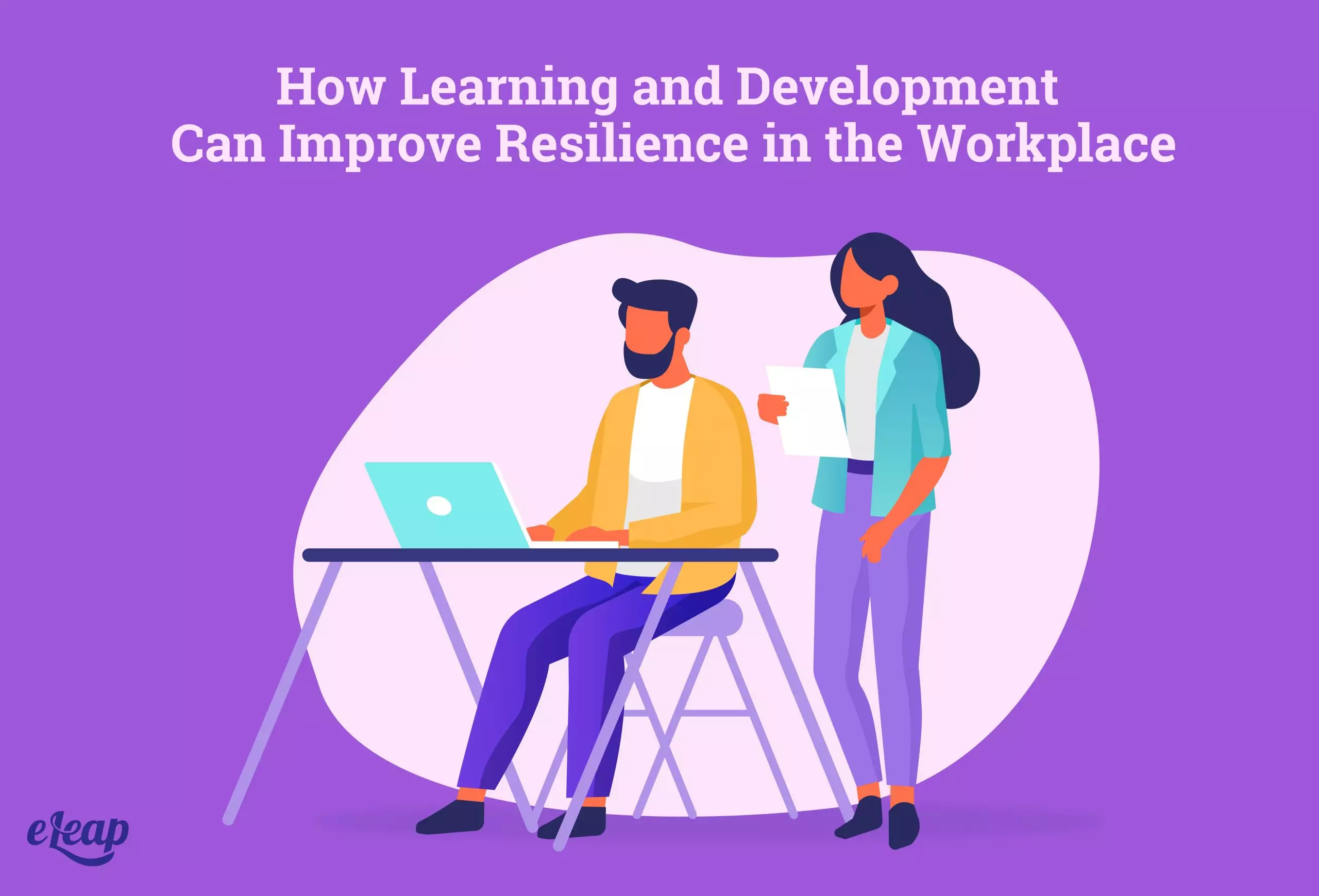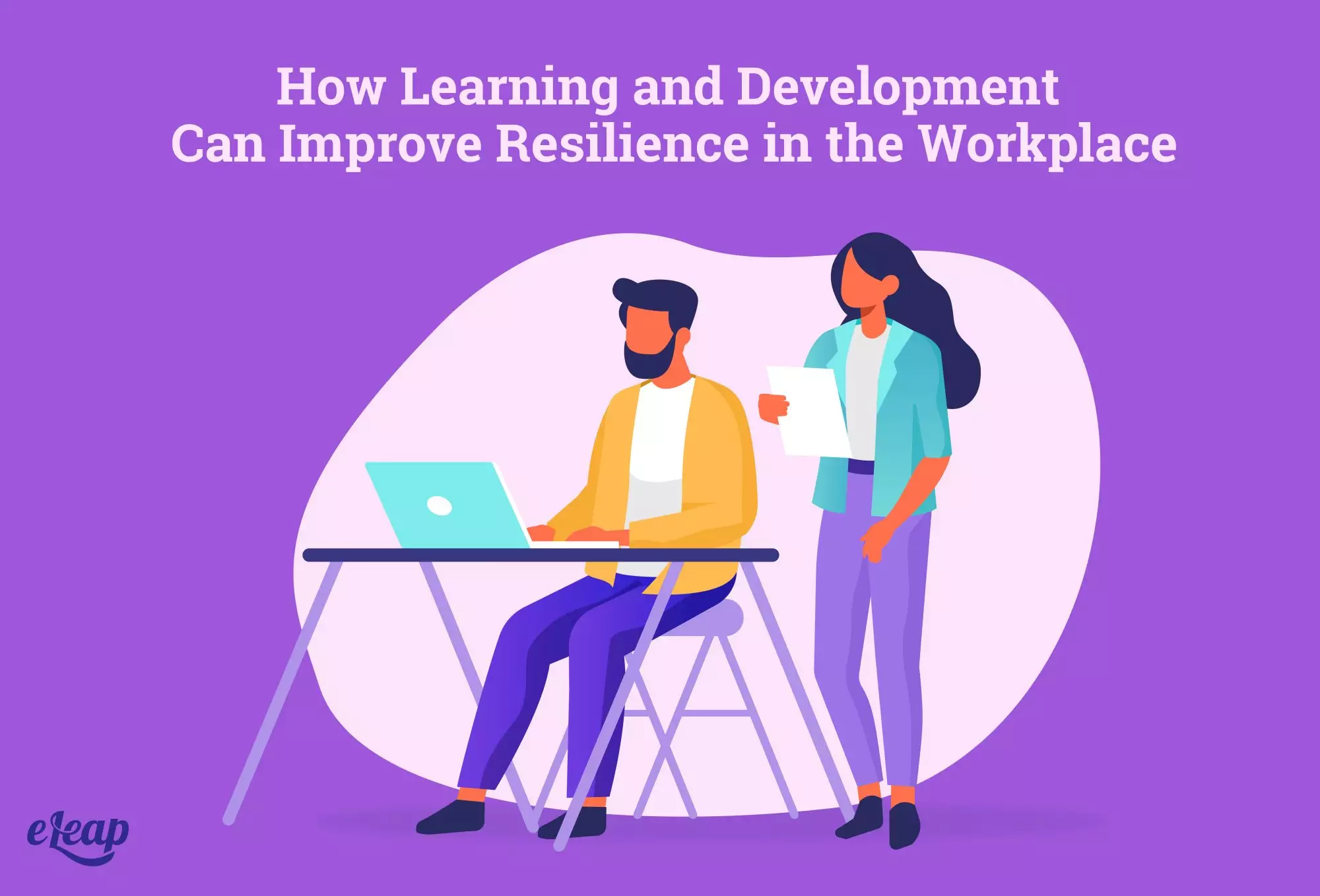How Learning and Development Can Improve Resilience in the Workplace

What would you say are the most important qualities of a successful team member? Professionalism? Knowledge? A willingness to go the extra mile? These are certainly important, but you cannot neglect resilience, particularly today.
In the age of COVID-19, resilience – the ability to roll with the punches – is absolutely crucial. Why, though? And what is resilience all about? We’ll delve into those questions and then help you understand how your company’s L&D initiatives can improve resilience within your team members.

What’s Resilience, Anyway?
According to Psychology Today, resilience can be defined as “that ineffable quality that allows some people to be knocked down by life and come back stronger than ever. Rather than letting failure overcome them and drain their resolve, they find a way to rise from the ashes.” In short, it’s someone’s ability to bounce back from a negative experience in their personal or professional life and, rather than being defeated, redouble their efforts.
However, resilience doesn’t come down to just some sort of undefinable quality that only certain people possess. It’s an ability to use skills, knowledge, and abilities to deal with problems and challenges, recover from them, and come back once more. In short, it’s a learned trait. Yes, some people are more naturally resilient than others, but anyone can learn to be more resilient.
Why Does Resilience Matter?
So, why does resilience matter for your team members? There are quite a few reasons, including the following:
- More resilient people can learn better and retain more information. This has obvious implications for the workplace, but also personal and professional growth and development.
- More resilient people are absent from work less. This speaks to a wide range of important outcomes in the workplace, from productivity to keeping projects on track, and everything in between. It’s not just about the bottom-line cost of sick days or paid time off. It’s about business momentum.
- More resilient people engage in risky behavior less often (binge drinking, drug use, etc.).
- More resilient people tend to be more physically active and healthier, both physically and mentally.
- People with more resilience tend to be more involved in their teams, families, and their communities, leading to better outcomes and improved engagement across the board.
As you can see, reliance matters for some very good reasons. This begs the question of how you build a more resilient workforce. You can do so in several ways, many of which fall back on your learning and development initiatives. We’ll break things down in the next section.
Building a More Resilient Workforce
Building more resilient teams is critical, but it can be challenging. With a little clarity and a few pointers, though, it becomes simpler to achieve.
Provide Resilience Training
Perhaps the most important consideration is to offer your teams formal resilience training. This can be done in several ways, including through your LMS. However, in some cases, you may find that in-person, classroom-style training is the only option, particularly if you need to train a significant number of employees at one time. Some of the benefits gained from resilience training at work, whether delivered virtually or in a classroom, include the following:
- Develop a group understanding – This is a critical consideration when you need people in your organization to react and come together as a group. With this type of understanding, team cohesion and positive team coordination become possible at all times, including during challenging periods.
- Provide actionable feedback – In a group training situation, observers can provide actionable feedback during the exercise or simulation, allowing for course correction and improving outcomes.
- Cognitive tests and challenges – Another benefit here is that providing cognitive tests and challenges to the group can help improve problem-solving capabilities, teamwork, and the ability to deal with challenges as they arise, as a single unit, rather than from different perspectives.
Of course, to achieve this, you need to make resilience training a core part of your L&D program. We recommend that you do this in multiple ways, including virtual training for individual employees, as well as group activities (whether in person or virtual). A knock-on benefit here is that when you see how employees respond to situations outside the norm, you can take further action to either help them build additional skills or even chart their career path where those strengths can be put to the best use.
Provide Documentation and Guides
Another important part of building a more resilient workforce is to provide documentation and guides. When something does not go as planned, or when a situation seems to be going off the rails, your team members can turn to those guides and documentation for help. That can help to build confidence and impart a sense of autonomy, both of which lead to better outcomes and an improved ability to roll with the punches.
Look to Your Company Culture
Improving resilience in the workplace may require that you take a long, hard look at your company culture. Does your culture value learning and development? Is resilience a key trait that you value? Does your culture value employees helping one another during challenging periods? Do you reward employees for resilience?
If your company doesn’t value resilience and L&D isn’t a core part of your culture, you have some work to do. The good news is that changing your culture is possible. However, it will require intentionality and effort.
A Resilient, Successful Workforce
With the right focus on L&D, an understanding of why resilience is such a critical trait for your team members, and a good understanding of your company’s culture, it is possible to create a resilient, successful workforce. Those employees will support each other and propel the business forward despite potential pitfalls and setbacks. However, if you fail to focus on resilience, it’s possible that your teams will not be able to act as a single unit, and that employees won’t be able to bounce back from negative events.